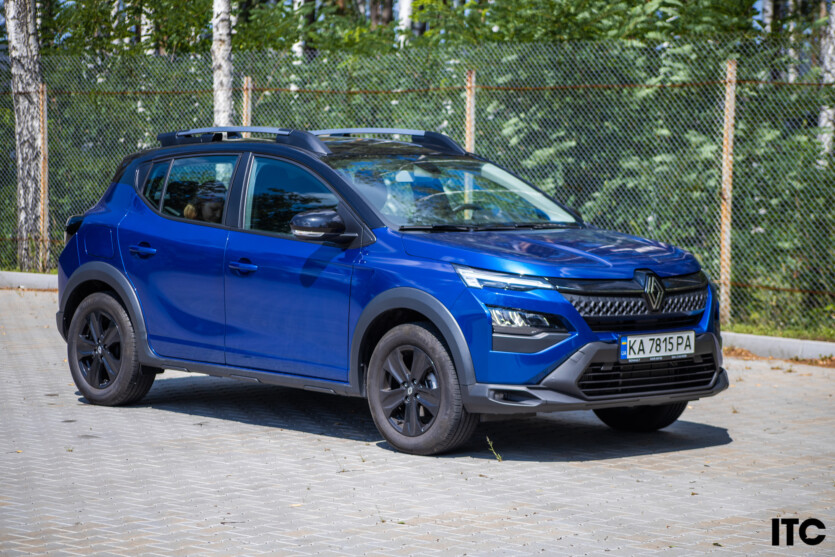
It’s unusual to praise the French, but they really deserve it, at least for regularly updating their model range and boldly putting their stand-ins on the road. Only in our case, Renault Kardian has gained originality and even a hint of character.
No matter what those who are picky about Renault products may say, somewhere in the head office, they are assessing the capacity of various markets and consumer needs with the precision of engravers. More precisely, they identify the segment that is worth targeting and offers more opportunities. A well-balanced strategy has allowed them to stay at the peak of popularity for a decade and their cars have not disappeared from the ratings.
The French supply their cars under the Renault and Dacia brands, and at this stage you can already get confused: in which country which brand will be available, plus cars for different markets are assembled at different plants, with different power units, configurations, and so on. Apparently, they can’t figure it out on their own without a hint. Only our Renault Kardian will not be seen by the French themselves in any form — it is exclusively a product for “third world countries” and it is coming to us from hot Morocco.
Interestingly, the Renault Taliant, which is similar in terms of functionality, status, platform, and technology, is assembled in Romania and has a much lower price than our crossover. However, we understand that sedans are not very popular now, and the styling of our hero will definitely be in trend.
Built on the fresh CMF-B modular architecture, like the Taliant, Renault Kardian is actually more of a Sandero Stepway, which our consumers loved for its price restraint, practicality, and unpretentiousness. And now many owners of previous Sandericks are looking back at the new model to see if it offers more and cooler bells and whistles. I’ll reassure them that you can notice the difference, but not so much. Plus, there will be no more new Sandero’s in our country, like Cardinals in Europe.
Content
A cocky appearance
The Renault Kardian looks absolutely stylish: muscular bumpers, plastic around the body, 210 mm ground clearance, short overhangs. At first glance, the character is straightforward, and the front-end styling similar to its older brothers makes it worthy of standing alongside not only the slightly larger Capture but also the flagship Koleos. However, now the brand’s lineup is limited to only two crossovers in the head with the Duster, so it is our baby that is allowed to play the role of a city party animal.
In general, the appearance of the Renault Kardian is definitely an advantage and emphasizes its practicality. It is not intimidating and will not be lost either before curbs or dirt roads. An additional advantage is the branded roof rails, which can easily change their position from longitudinal to lumbar and back again. We’ve seen this feature before on a certain brand model, but I can’t even remember which one, but the convenience is undeniable. However, you will need a screwdriver.
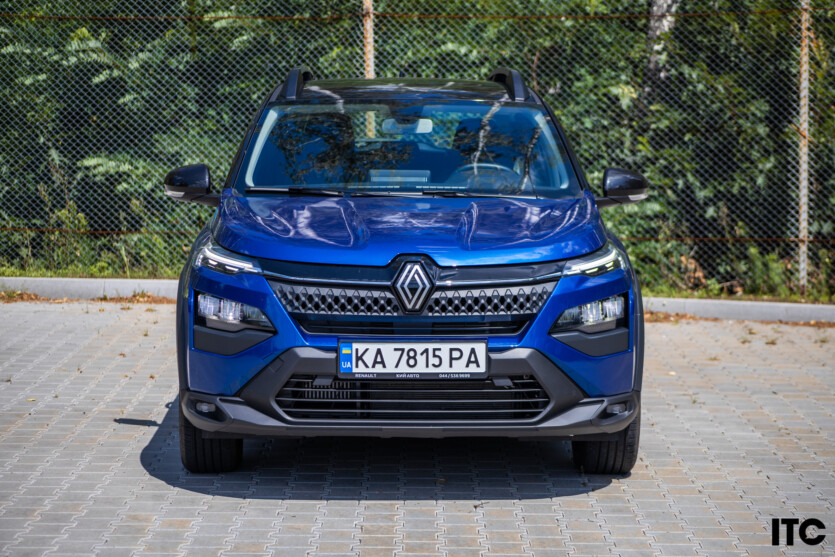
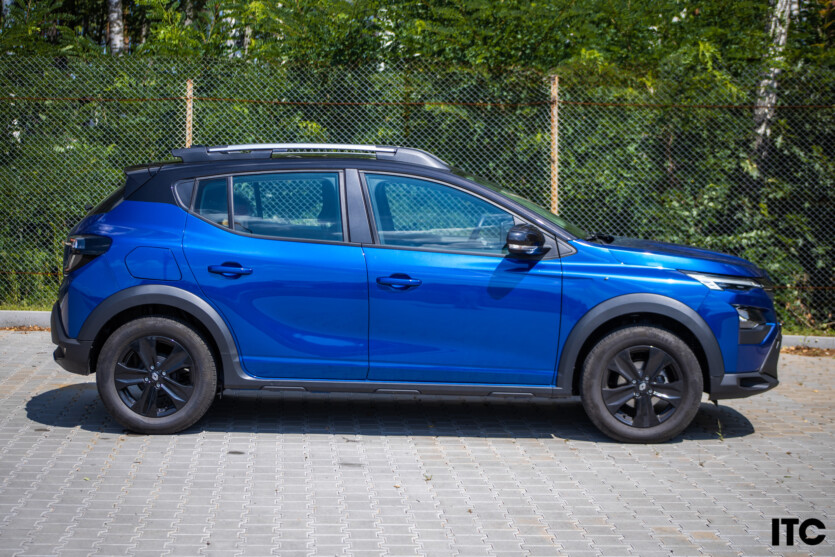
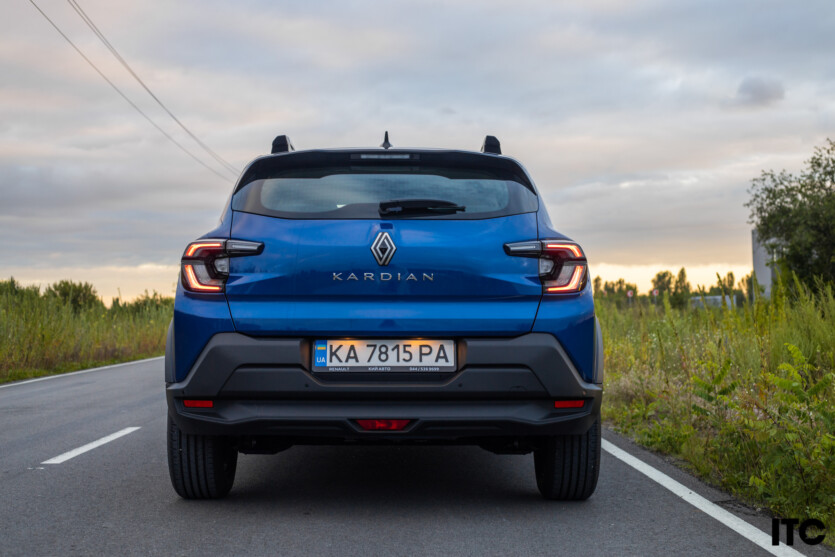
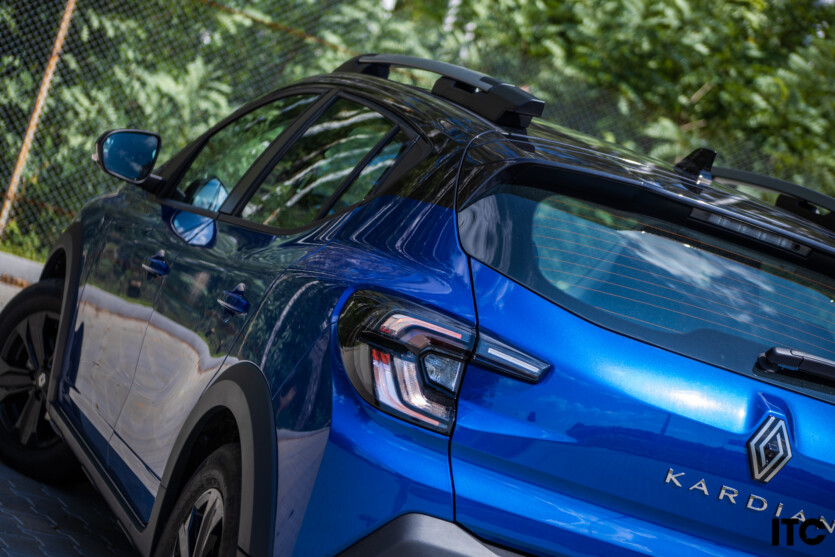
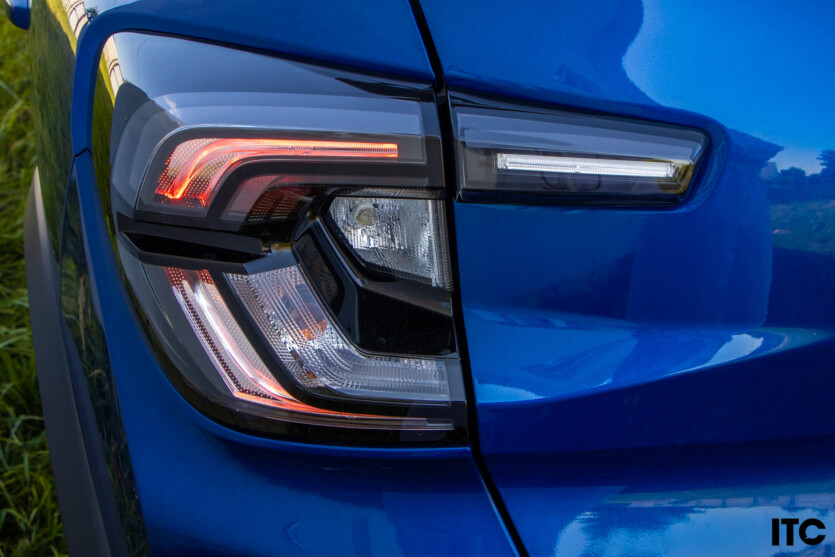
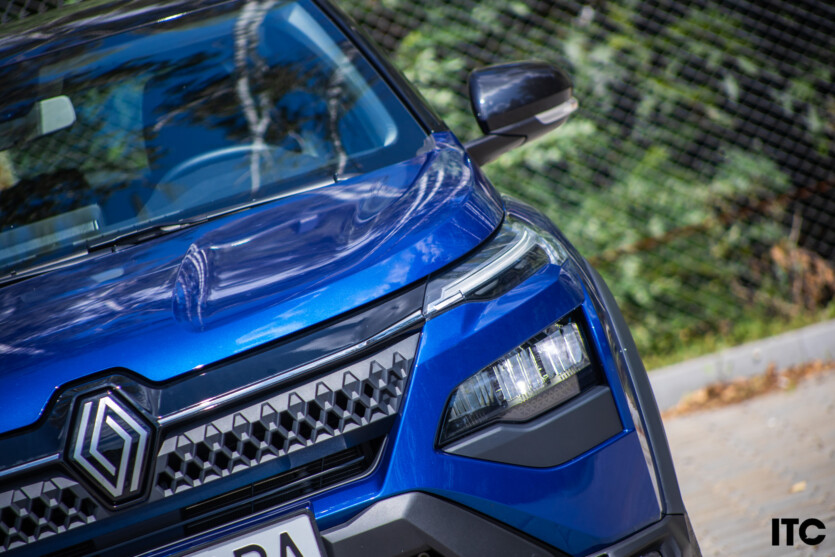
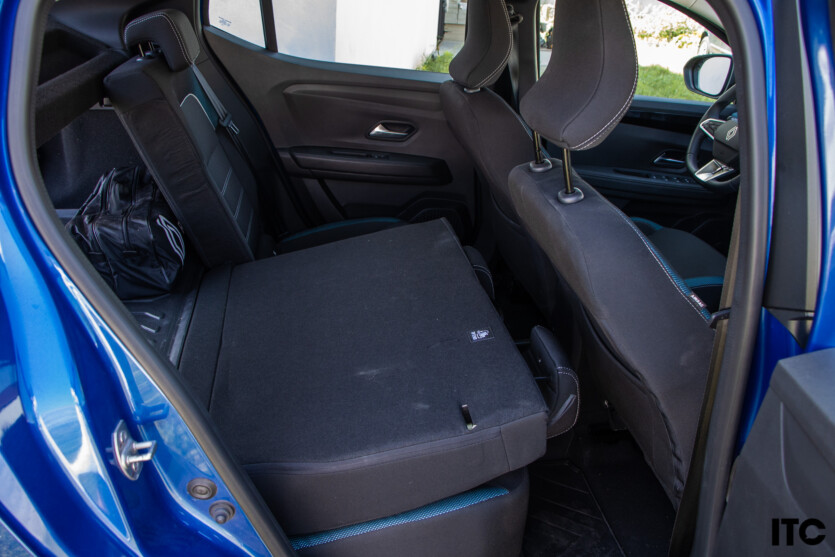
Its compact size puts it in competition with the Toyota Yaris Cross, Nissan Juke, Hyundai Venue, Citroen C3 Aircross and others. It has a length of 4119 mm, a width of 1758 mm, a height of 1494 mm and a wheelbase of 2604 mm. It is based on the usual chassis configuration for this class with independent suspension in the front and dependent suspension in the rear.
A fresh start
The fact that the Renault Kardian is designed for the city is undeniable and is confirmed by front-wheel drive, a liter engine, and a decent trunk of 450 liters. Although the omnivorous suspension may provoke you to drive on dirt roads. However, this is a deceptive feeling, because there are no options for mono-drive, and if you want to play in the sand, then it’s to the Duster.
For a compact, the Renault Kardian behaves quite decently on the road, if you keep within the limits of “grandma’s driving”. And for such an ability to swallow minor flaws, you forgive it for a lot of floppiness in corners, a lack of steering clarity, and also sufficient information from the wheels. This is all for others, and Renault Kardian’s task is to take you from point A to point B with convenience, in personal space and relative comfort.
The music setting here is not bad and muffles the noise from under the wheels, rumbling in the wheel arches and howling wind in the mirrors well. Noise isolation is somehow behind the technology, even the purr of the engine breaks through the walls, but it is more pleasant than annoying.
Considering that the output of a one-liter engine is only 100 hp, you stop expecting more. It works with a CVT, although in some markets there are versions with a two-clutch robot. Still, our version is more pleasant, because the shifts are not noticeable, and the torque delivery is quick and clear. There is an additional manual mode, which can be activated with a lever or by switching the steering wheel paddles, but it will not hold a gear for too long — it will jump over itself — but it allows you to accelerate if necessary.
Unlike its brother on the Taliant platform, the Kardian consumes a little more fuel. Perhaps at the expense of its high stance and slightly worse aerodynamics. Here, the average consumption in mixed mode is 8 liters, and only with very quiet driving on the highway can it drop to 7 liters per 100 km.
Renault Kardian is easy to drive, its dimensions are easy to feel, and in general, everyday communication is not annoying. And this is perhaps the most important thing in the budget segment. You won’t expect too much — you won’t be disappointed. If you want intelligent assistance systems, more technology, then you should go for the Toyota Yaris Cross or Peugeot 2008, and here you will only have wireless smartphone connections, LED optics around the circumference, and in the top configuration — blind spot monitoring and emergency braking. Surprisingly, even the Nissan Juke offers many times more, and the price is not far behind our hero. Let’s take a closer look at the new C3 Aircross — because it even puts Kardian on the spot with its price.
Simplicity and openness
The Renault Kardian — compact crossover is not overloaded with intelligence. It offers simple, clear functionality, just like the cabin. There is plenty of air, space and storage. The many pockets will not be ergonomic with rubberized mats, as in the Skoda Kamiq, and are not quite deep, but they are convenient enough and always at hand. Even the top pocket in the door was made so that coins could be easily removed. These pockets can accommodate different sizes of bottles, but I wish they were deeper so that the bottles would not fall out when you open the door.
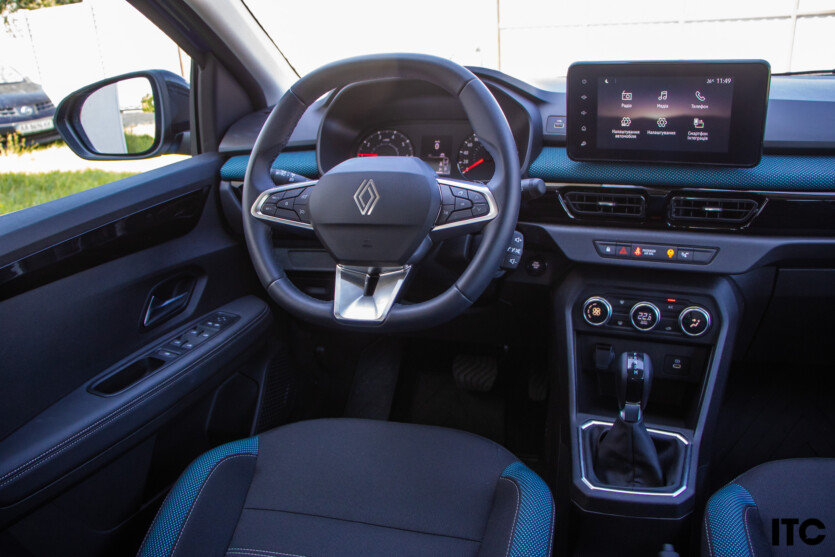
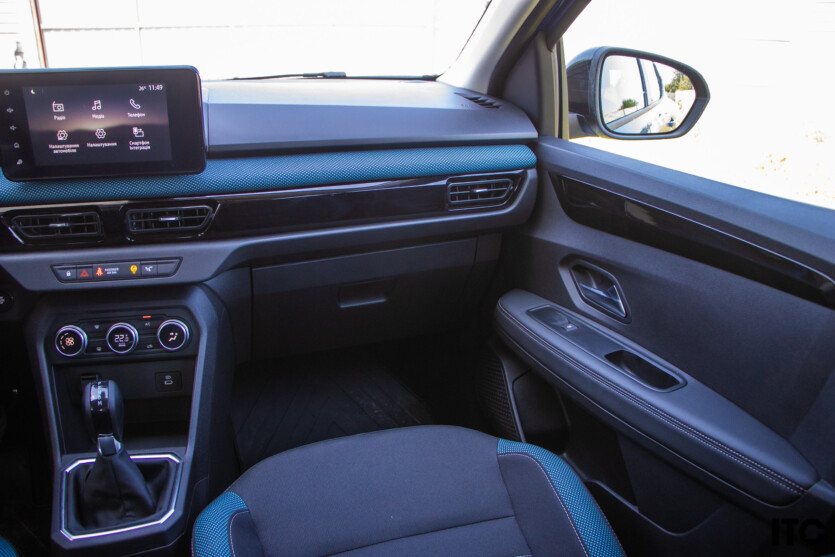
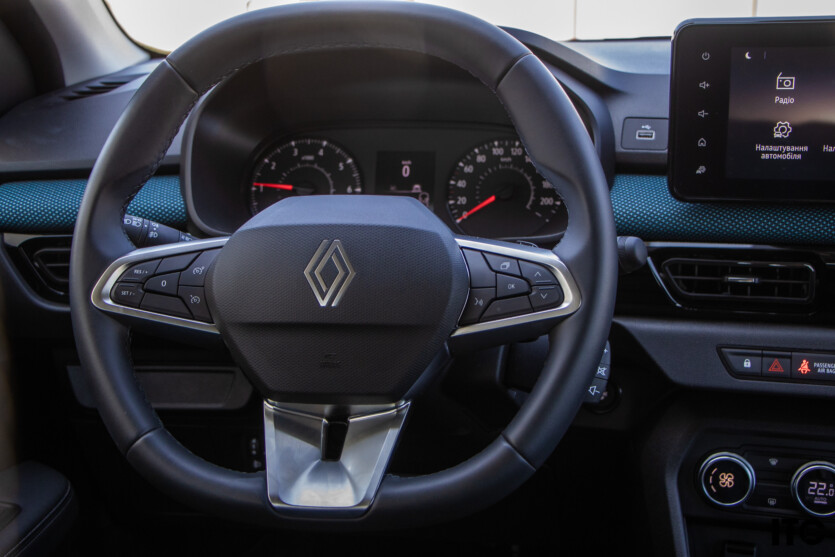
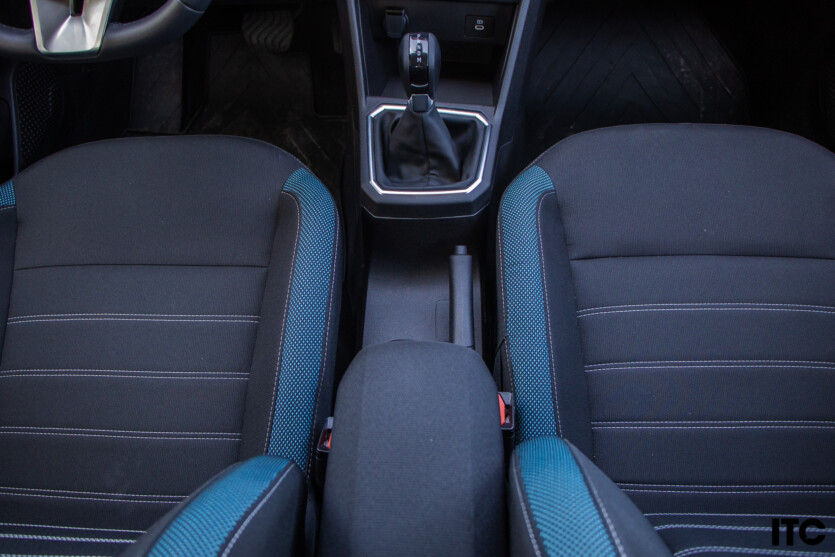

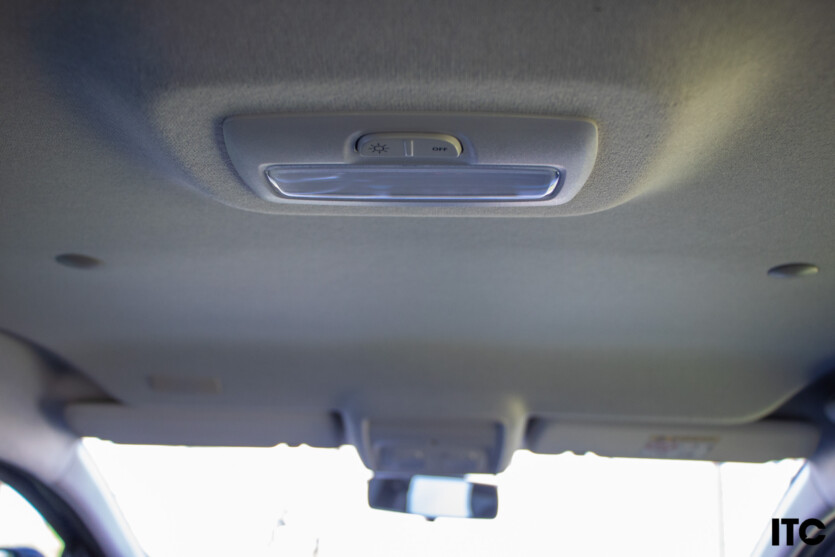
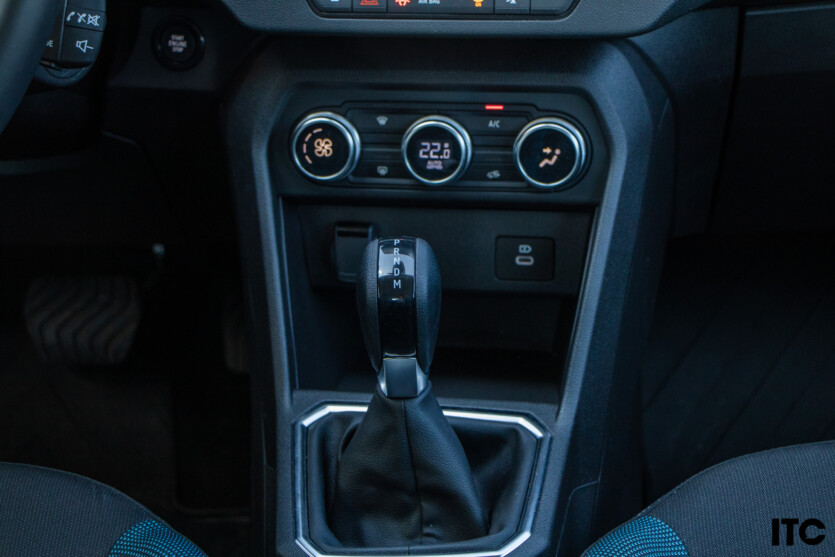
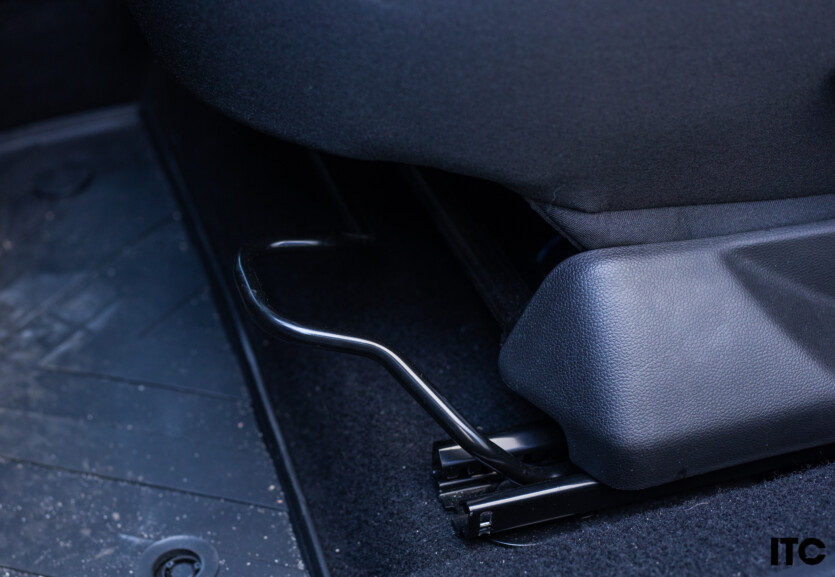
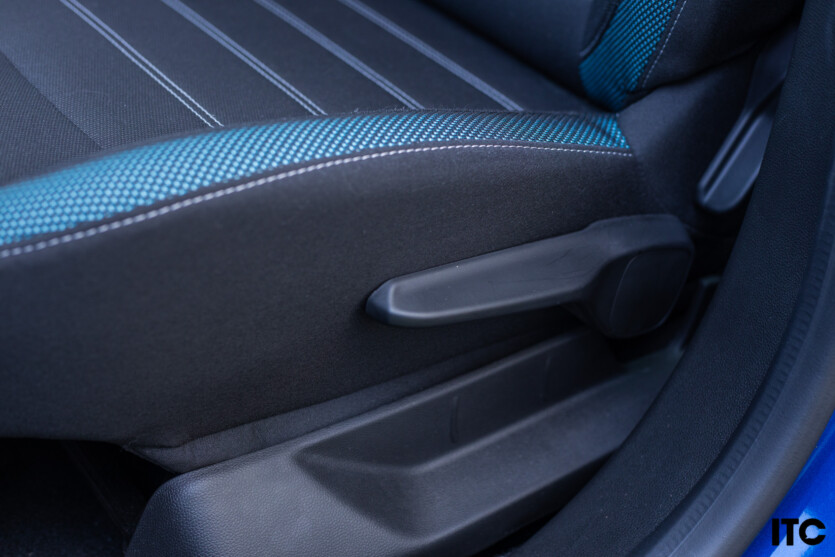
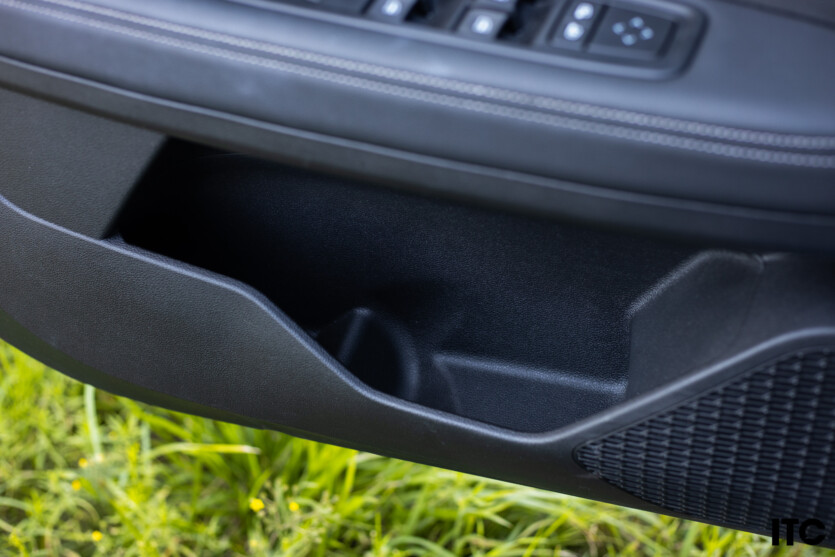
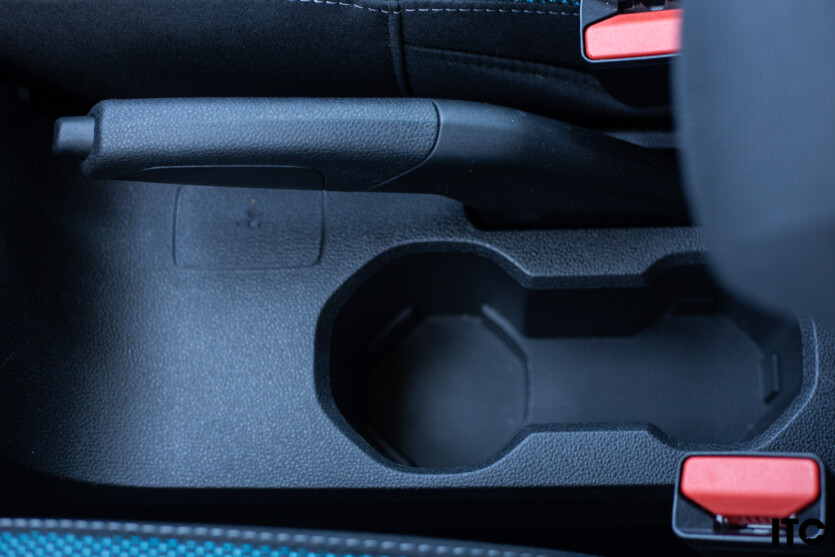
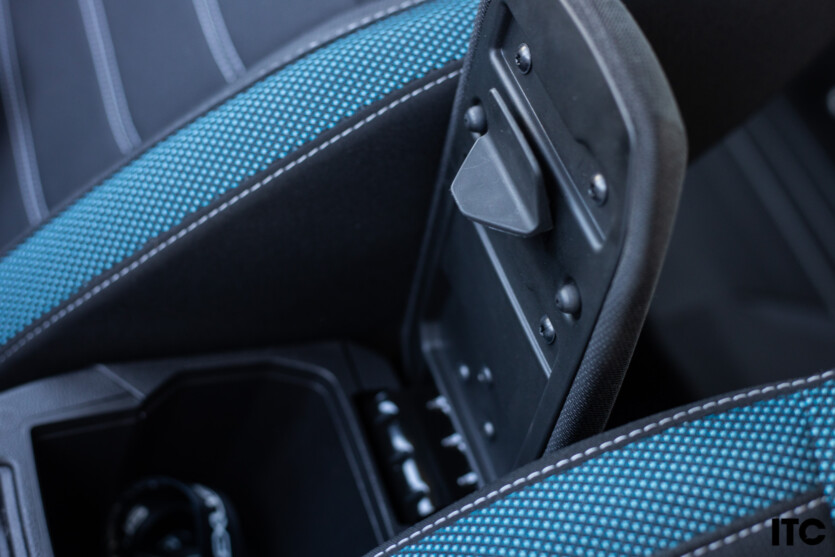
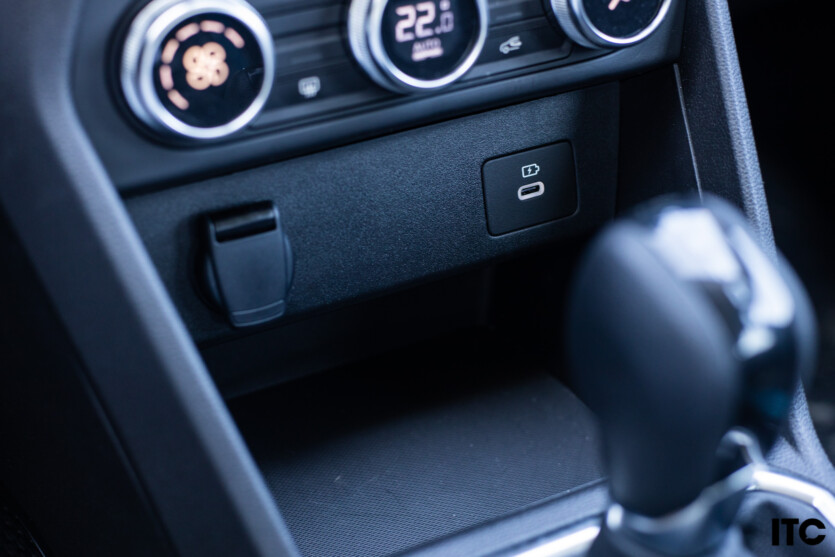
The interior architecture is exactly like that of the Renault Taliant, but, in my opinion, it’s still cozier and the materials are better. Everything is pleasant to the touch, and the fabric upholstery is of restrained colors with neat colored inserts. The torpedo is made of hard plastic, which prevails here, and is soft only on the doors where you usually put your hand. They left it soft in the armrest, which is even nice. It’s small, but it comfortably supports the elbow, and there’s a small container under the lid.
Only the glove compartment is huge, where you can hide even a dog, not to mention an A4. The luggage compartment also boasts a good amount of space, there are hooks, and under the floor there is a spare tire and a small space for storing tools. Just pack them in a soft bag so that they don’t rattle. The jack is hidden in the side mounts.
The central monitor has a much more modest size, and the dashboard in the middle configuration, like ours, has only a small screen of the on-board computer. Only the top version will offer the optional installation of a 7-inch digital dashboard. And it’s up to you to decide whether you need it. As for me, even analog instruments do their job. If there was an offer with assistance systems or map or navigation broadcasting, then it would make sense.
There is also a signature feature here, the latest Renault — a USB input near the central display. In the Duster, it was paired with a smartphone holder, but here it is missing. The idea is convenient and practical, but it’s more for taxi drivers who need to connect navigation or other devices. For everyone else, there is a 12V socket in front and behind, as well as a Type-C input in the center console.
I especially like it when they leave the usual gearshift levers in the car. It fits well in the hand, it’s easy to shift. Only in our case, there is a small bug, similar in effect to the Suzuki lever, when you need to press the key to turn on the manual mode and you occasionally slip into Drive mode.
The functionality of the multimedia system is not extensive, but it is clear. The only thing missing is a physical volume control, because when you need to quickly mute the sound, you have to use a sensor on the monitor or a separate lever under the steering wheel, which is not always convenient. It’s good that at least the radio doesn’t turn on unnecessarily, as it does in some cars. The system saves the mode that was on when the car was turned off, unlike the on-board computer mode.
It is very convenient to use a separate panel for the climate. Here it is single-zone and quite noisy. There is a heated rear window and side mirrors. And that’s it. There is no other heating here: neither the seats nor the steering wheel. Perhaps this is a greeting from hot Morocco. Even the climate temperature does not rise more than 26 degrees — the car considers it unnecessary. And the heat works only from the 25-degree mark. So keep these little things in mind.
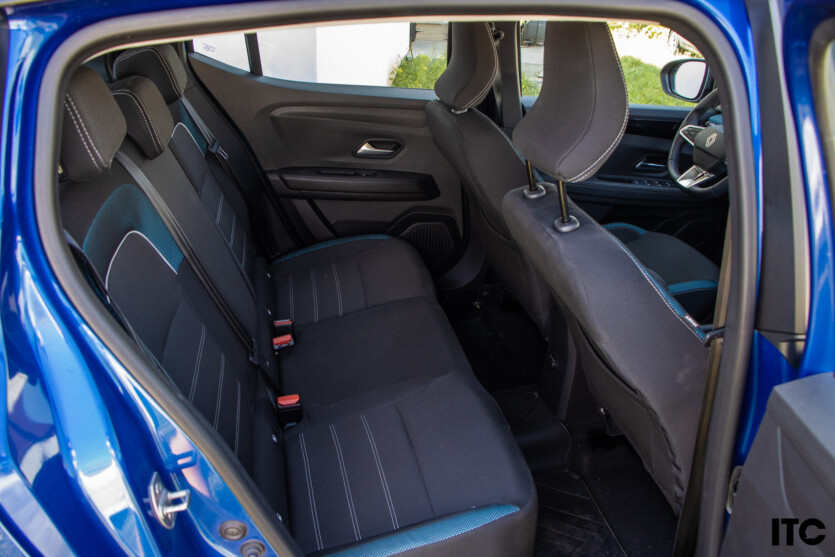

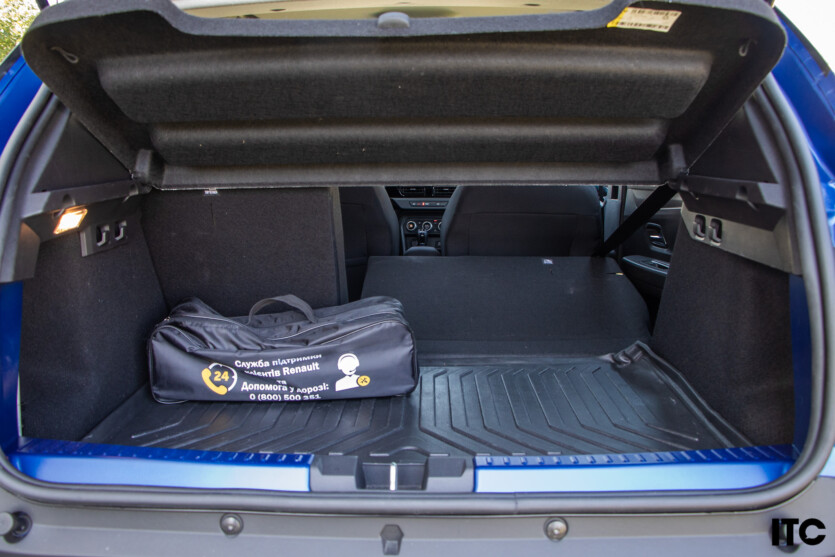
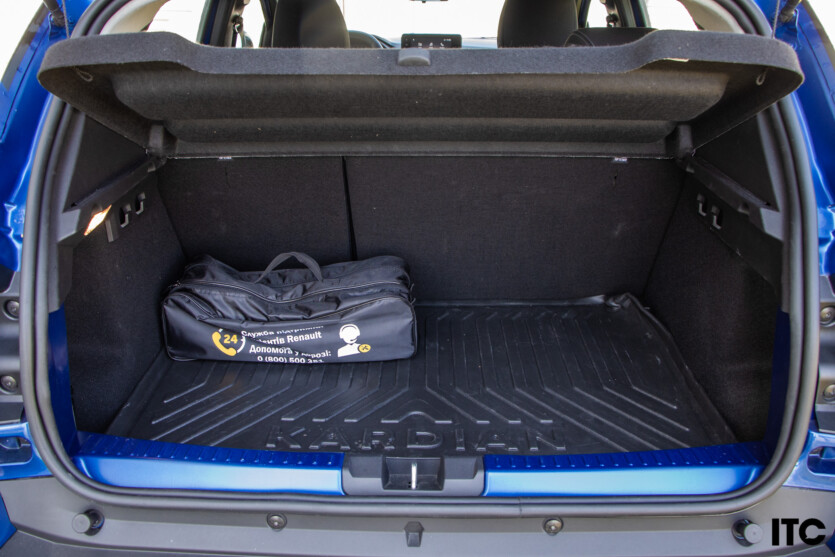
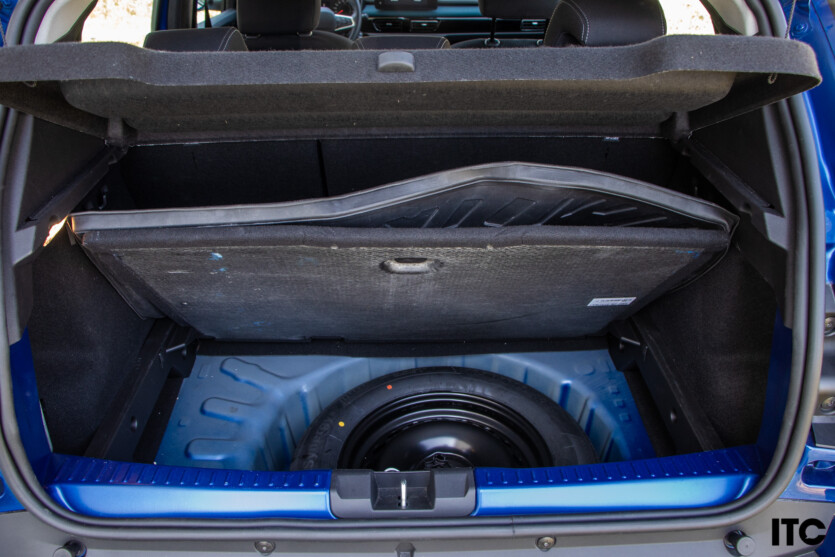
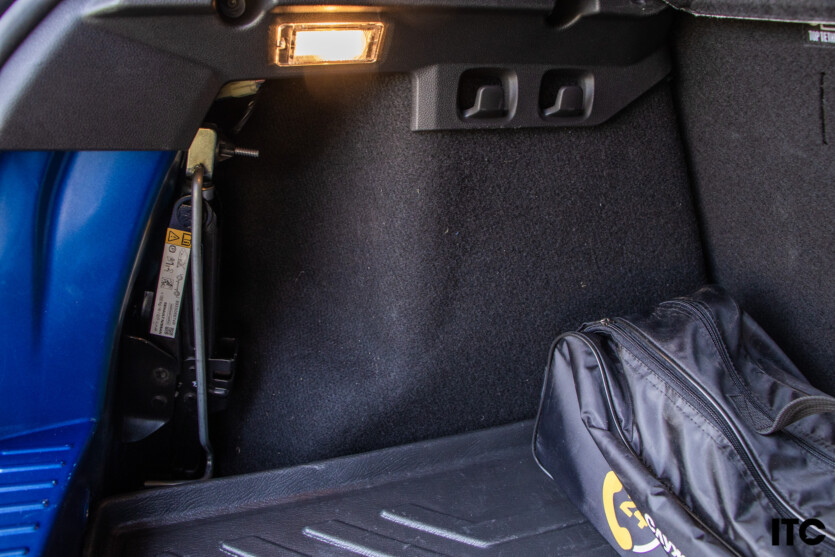
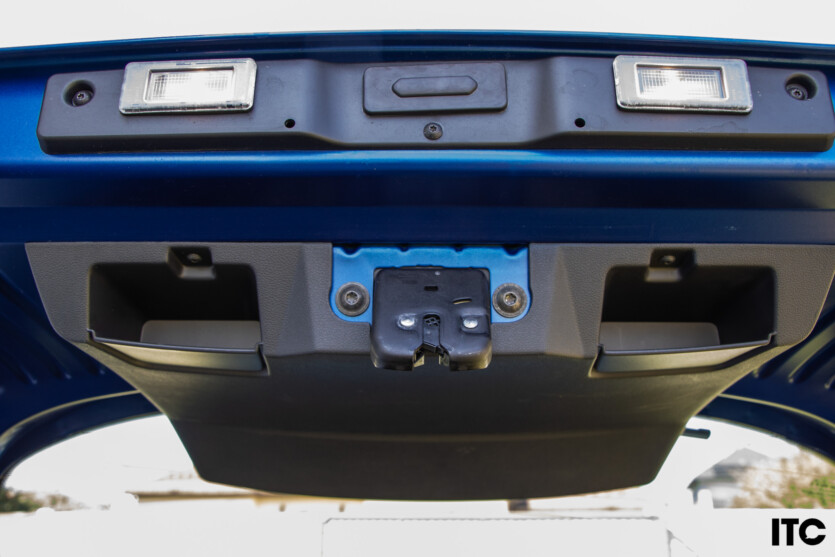
Surprisingly much space was left for the rear visitors, for a compact. Even three people can fit in there, but not very tall people. Although there is still much more space in the Skoda Kamiq, as well as storage space. There are no armrests or cup holders, only laconicism and minimalism. It’s a good thing they left the power windows and cup holders in the doors.
Conclusions and positioning
While you are reading and recalling the critical comments, someone is already buying a Renault Kardian. Not because it’s the best car in the segment, or even because it’s one of the most affordable, which is still in question, but because Renault is giving a 100 thousand hryvnia discount as part of its loan program. And if you take this into account, it will be difficult for competitors to compete.
It is interesting that even in the mid-range Techno configuration, Renault Kardian offers a decent set of equipment for everyday life. It will definitely become a dream come true for novice drivers. Or maybe those who appreciate simplicity and unpretentiousness. For the price of 968,400 UAH, this is a good option if you don’t go too deep into the market.
However, for consumers who really value their comfort, quality, and atmosphere, it is better to look at other French cars Peugeot 2008 or the Citroen C3 Aircross, the latter of which will cost 901,800 games for the hybrid version. Even Suzuki Vitara with a 1.4 gasoline engine and automatic transmission can be purchased for UAH 901,800 (promotional price). And Skoda Kamiq in the initial configuration, but with a robot will cost from UAH 935,750, and there is much more space in it.
In general, Renault Kardian is breaking into a very tight segment of not only compact crossovers, but also budget ones. And here you need to have more than just a charismatic appearance.
PROS: stylish exterior design, spacious interior, comfortable roof rails.
CONS: dynamics, control, noise insulation, lack of modern safety systems even in the options.
Technical characteristics of Renault Kardian 1.0 CVT Techno
| Body, type | SUV |
| Dimensions (LxWxH), mm | 4119/1758/1494 |
| Wheelbase, mm | 2604 |
| Declared ground clearance, mm | 201 |
| Trunk volume, liters. | 398 |
| Curb weight, kg | — |
| Engine | 1.0 |
| Power, hp. | 100 |
| Torque, Nm/rev | 142 |
| Type of drive | front |
| Suspension in front of. | Independent by the Macpherson type |
| Rear suspension | Semi-dependent beam |
| CHECKPOINT | CVT |
| Dynamics 0-100, s | 12,5 |
| Maximum speed, km/h | 169 |
| Fuel consumption, l (mixed) | 7,8 |
| Cost, UAH | From 738 900 |
| The cost of the test car, UAH | 849 400 |
| Competitors | Nissan Juke |
| Hyundai Venue | |
| Peugeot 2008 | |
| Toyota Yaris Cross | |
| Jeep Avenger | |
| Skoda Kamiq | |
| Citroen C3 Aircross |

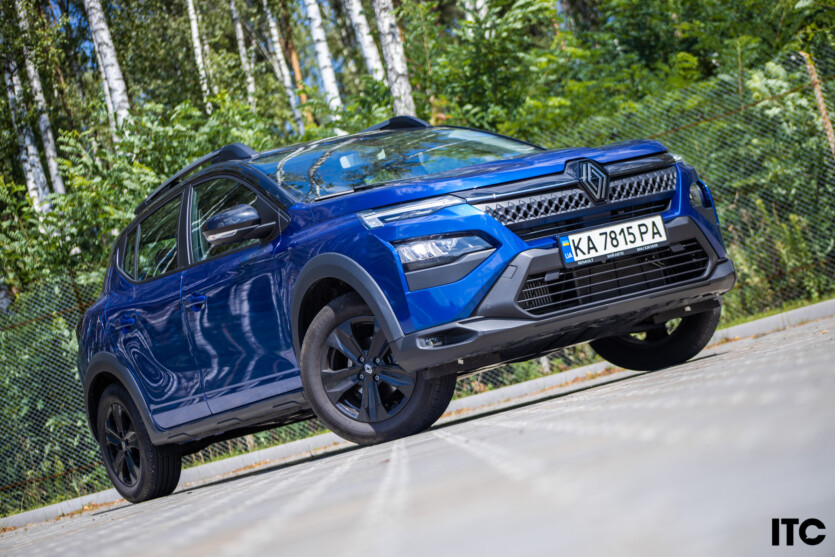
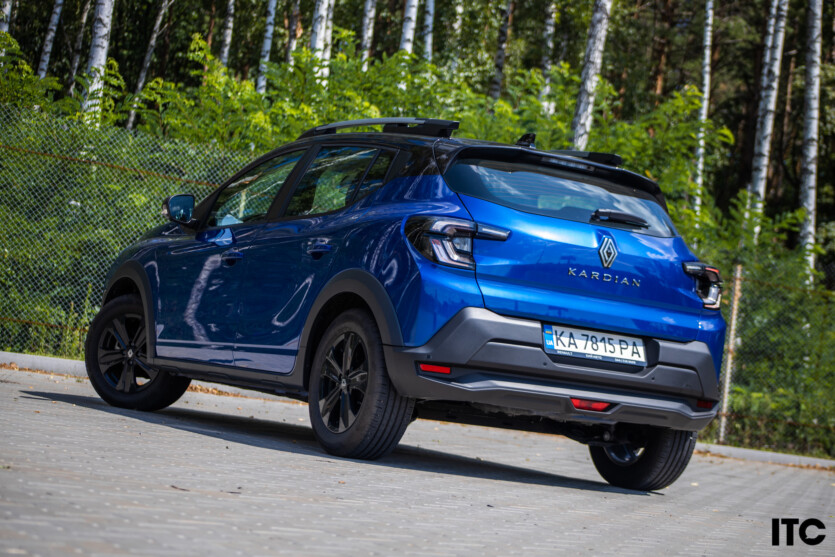
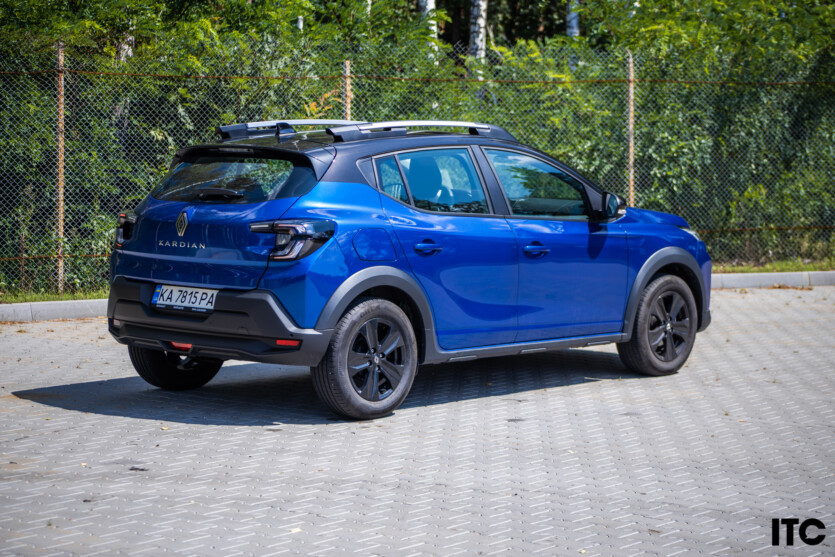
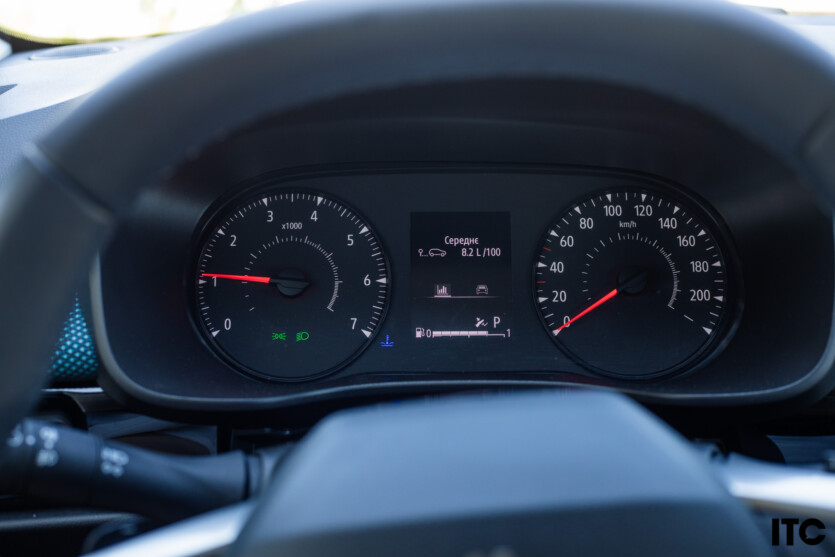
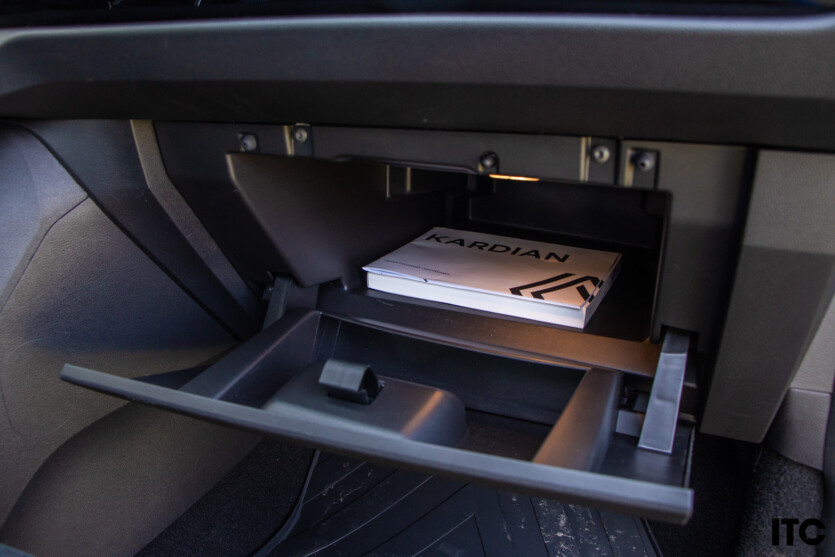
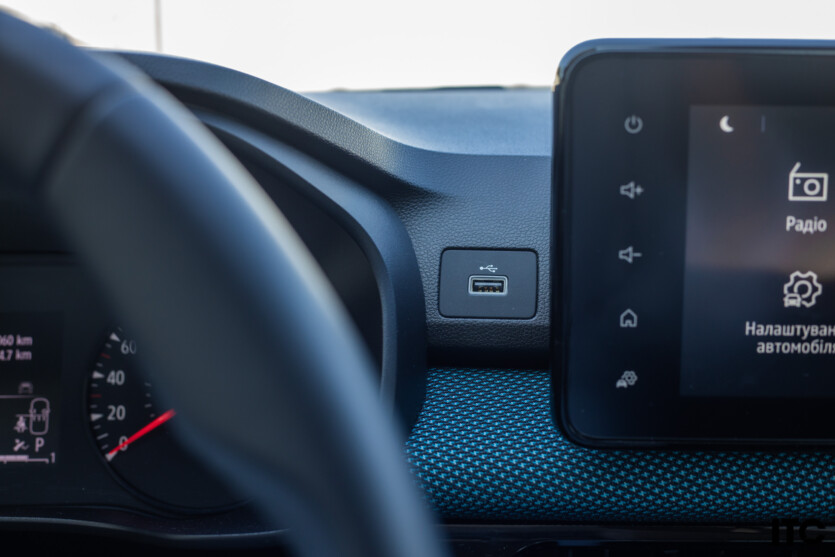
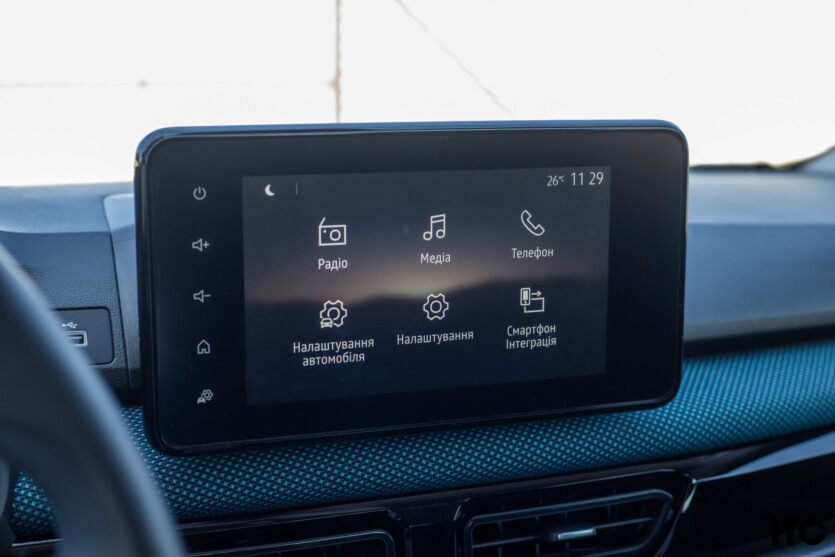
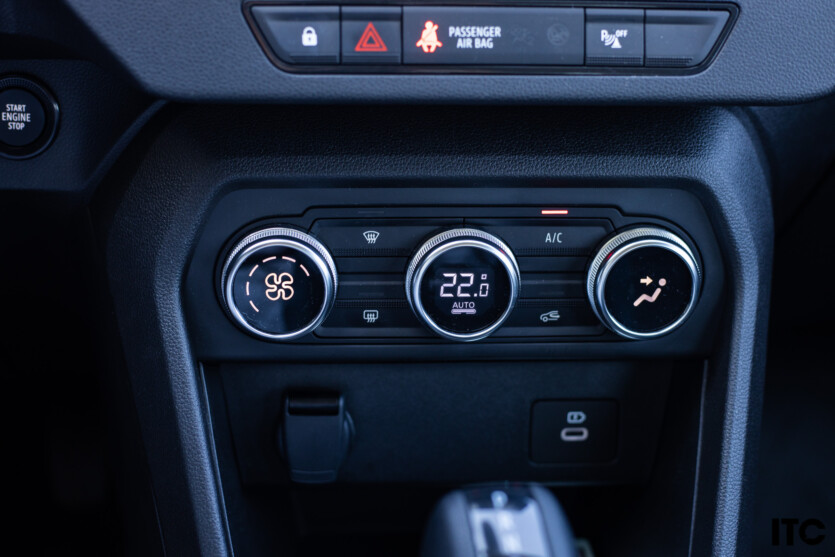
Spelling error report
The following text will be sent to our editors: